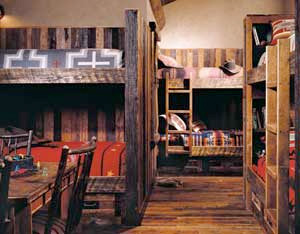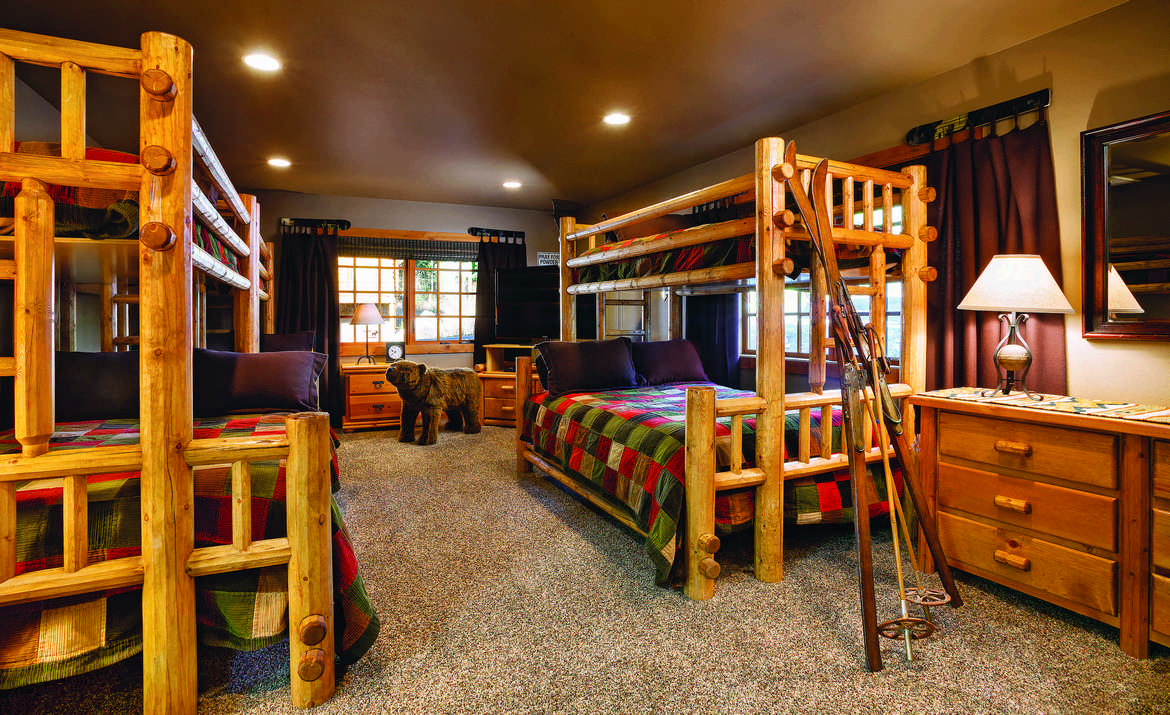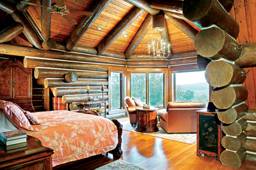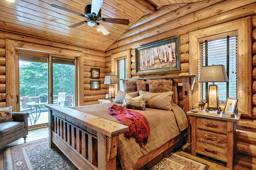1. Function First
Can you say sleeping quarters? This bunk room is functional first, to be sure, and the custom built-in beds make it a favorite spot for the kids to sleep. Drywall lined with a thin layer of wood paneling is a leaner option than round log walls, which tend to hog square footage. In rooms like this, where much of the floor space is covered by furniture, be sure to account for walkways with plenty of maneuvering room for folks carrying luggage.
2. Custom Quotient
The best way to get the most of your space is to customize it. Even in rooms that are a basic square footprint without a sloped ceiling, you can get a lot more mileage out of built-in bunks. Arrange them around window openings and incorporate storage underneath and even into the frame. Specialized bunkbeds are also an option, including full-sized bunks for adult guests or triple-decker bunks. A custom set of bunks is more seamless, too — here, the homeowners opted for higher sides on the top bunk (instead of cumbersome railings) and character log posts.
3. Free & Standing
Freestanding bunks tend to be lighter and airier than their built-in brethren, and kids love them just as much. They work even under a sloping roofline, and there isn't a shortage of design options for this furniture favorite. When shopping, be sure to bring measurements of ceiling height and slope, width between walls and window frames, and other odd angles that would dictate the size and height of your bunk.
Specialized Lighting
Like all rooms in your home, you'll want a variety of light sources to make the bunk room work. This is a place primarily for sleeping, but assume kids will play here and also want to read before hitting the hay. Natural light from windows, overhead ambient fixtures and tableside reading lamps are a must. Remember, too, that while this is largely an open space, closed-in bunks (especially on the lower level), will be light deficient. Well-placed sconces inside the actual bunk or on the wall next to it illuminate shadowy corners without a wire-routing disaster. (You'll have to incorporate this type of wiring into your blueprint.) In lieu of nightstands, mount less-intrusive shelves where light fixtures can sit
Tip: Sleep Safely
Obviously, safety is an issue the higher you build your beds. Follow these guidelines for a safe night's sleep:
• Firmly attach guardrails (at least 5 inches above the mattress surface) on all sides of the frame.
• Secure the ladder to the bed frame.
• Ensure that the cross ties are secured under the mattress foundation.
• Choose a mattress that fits.













